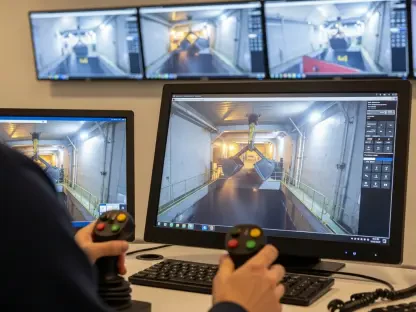The US Space Force has recently identified Chinese satellites performing maneuvers that resemble classic aerial combat techniques, suggesting a shift in China’s space strategy towards heightened aggression. During a speech at the McAleese Defense Programs Conference in Washington, General Michael Guetlein highlighted these activities, indicating China’s determination to bolster its space capabilities. Among these plans are the astronomical goal of 100 orbital launches and the deployment of a refueling station in geosynchronous equatorial orbit, intended to maintain and extend the operational lifespan of its satellite fleet. These initiatives appear to serve both peacetime and potential wartime operations.
Commercial satellites initially detected and reported these maneuvers, which were later confirmed by the US Space Force. The objects involved, synchronized actions considered “dogfighting in space,” included Chinese satellites Shiyan-24C and Shijian-6 05A/B in low Earth orbit. Despite the relatively slow pace dictated by space physics, the term emphasizes the urgency for the Space Force to enhance its capabilities in order to ensure space superiority. This shift in tactics underscores the necessity for the US to remain competitive in space defense amid growing threats.
China’s Strategic Maneuvers in Space
The identification of Chinese satellites engaging in maneuvers akin to aerial combat techniques is not just a fascinating observation but highlights concerns about the nature and intent behind China’s space strategy. The maneuvers observed by the US Space Force indicate that China is investing heavily in developing space assets that can be used in conflict scenarios. One key initiative is the goal to conduct over 100 orbital launches to maintain a robust presence in space.
Similarly, the introduction of a refueling station in geosynchronous equatorial orbit, designed to service China’s satellite fleet, marks a strategic move to enhance the longevity and functionality of these assets. This capability ensures that satellites remain operational longer, supporting continuous surveillance and communication functions essential in both peacetime and conflict. General Guetlein’s observations of multiple objects maneuvering synchronously, resembling “dogfighting in space,” stress the reality of possibly encountering off-planet warfare in the near future.
The Technological Arms Race
Alongside its strategic maneuvers, China’s space program aggressively develops technologies aimed at disrupting space assets. The deployment of an extensive fleet of active signal jammers is a testament to China’s intention of prohibiting adversaries’ communications in space. These jammers, combined with tactics like jamming, spoofing, and dazzling, present significant challenges, along with threats from cyberattacks aimed at compromising spaceborne infrastructure. General Guetlein has emphasized that such actions demonstrate a willingness to defy international norms, suggesting that China’s ambitions in space are not confined to peaceful endeavors.
The technological capability gap between the United States and its adversaries, including China, has notably narrowed and threatens to reverse if the US does not respond with corresponding advancements. This underscores a pressing need for enhanced space defense measures as the dynamics of space warfare evolve rapidly. The ability to protect critical space assets from hacking, jamming, and other offensive tactics is essential in preserving national security and maintaining technological superiority in the field of space operations.
Synthesis and Future Considerations
The US Space Force has observed Chinese satellites performing maneuvers akin to traditional aerial combat, indicating a more aggressive stance in China’s space strategy. In a speech at the McAleese Defense Programs Conference in Washington, General Michael Guetlein pointed out these actions, showing China’s intent to enhance its space capabilities. China’s plans include an ambitious 100 orbital launches and setting up a refueling station in geosynchronous equatorial orbit to extend the operational life of its satellite fleet, aimed at both peacetime and potential wartime uses.
Commercial satellites first spotted these maneuvers, later confirmed by the US Space Force. The objects engaged in what has been described as “dogfighting in space” were identified as Chinese satellites Shiyan-24C and Shijian-6 05A/B operating in low Earth orbit. Despite the slow movements due to space physics, the term underscores the need for the Space Force to boost its capabilities to ensure space dominance. This change in tactics highlights the urgency for the US to stay competitive in space defense amid escalating threats.









